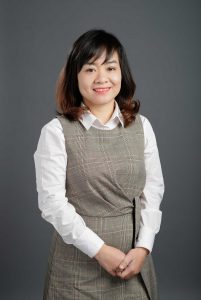A Melbourne-based engineer is helping save lives by teaming up with a construction materials company to design lightweight, cost-effective cladding that will not combust during a structural fire.
After the 2017 Grenfell Tower blaze in London, which killed 72 people, Engineers Australia member Dr Kate Nguyen MIEAust, leader of the Innovative Fire and Façade Engineering Group at RMIT University, felt there must a better building choice than aluminum composite cladding.
The plastic-backed aluminium material was a major factor in helping the London fire spread quickly, as the polyethylene core melted, then combusted.
While building codes regarding combustible cladding have since been revised, and bans on cladding made up of more than 30 per cent polyethylene introduced in New South Wales and Victoria, a viable alternative is still needed.
An effective safety solution
When she was approached by Envirosip to develop a cladding solution, Nguyen pored over research literature for ideas and realised that the way electrical cables are insulated might be part of the answer.
“Instead of using a ceramic resin that I’d been looking at, which was very costly, I thought the plastic insulation around electrical cables that uses tiny ceramic particles could effectively do the same thing,” she said.

The ceramic particles form a skeleton that acts like an insulation blanket for smoke and heat when the material is exposed to fire, Nguyen, who recently won the Australian Academy of Technology and Engineering Batterham Medal for Engineering Excellence, told create.
“At high temperatures, the ceramic particles activate and chemically interact with each other,” she said.
Subsequent experiments at RMIT’s testing furnace north-west of Melbourne led to Nguyen’s invention achieving the Australian combustibility standard AS1530.1:1994 (R2016) as well as the international ISO1182:2010 standard.
“I was really nervous at first because, for fire safety, you do three tests and can have three totally different results,” she said. “But when the material passed all the tests, it was a great feeling.”
There was also an environmental bonus.
The ceramic-like coating Nguyen created is made from industrial waste discarded by the coal and mining industry, which contains high levels of aluminium and silicon and generally ends up in landfill.
The process to make the cladding alternative also produces up to 90 per cent less greenhouse gas emissions than conventional manufacturing, according to Nguyen.
“Within the process we saw ways to utilise waste sources and lower the carbon footprint in the material,” she said.
Creativity and precision
Nguyen’s connection to engineering is lifelong, and she was inspired to join the profession by her father, who was a chemical engineer.
“As a child, I went to plants and saw people making glass from sand and cement from quarried stones, and my dad told me that an engineer was needed to find the correct ingredients,” she said.
“I loved the role of an engineer in design, which meant you needed to be both creative and precise.
“For construction materials, it is important that the material works as part of a construction system, as it won’t stand alone.
“I am also really passionate about bringing creativity and sustainability into building design.”
Nguyen has an MEng (Chemical Engineering) and BEng (Materials Engineering, Honours) from Hanoi University of Science and Technology in Vietnam and a PhD in civil engineering from the University of Melbourne.
“My interdisciplinary background is something of an advantage for me, as I can apply different engineering approaches to solve problems,” she said.
Her husband is also an electronics and telecommunications engineer and supports her as both an engineer and a working mother, added Nguyen.
New opportunities
Nguyen said fire safety engineering is a new area with opportunities to develop knowledge and create solutions.
Envirosip is now in the process of commercialising the product with different partners and exploring opportunities in Australia and internationally. The non-combustible product has been further developed for a range of applications, such as coatings and large FRL sheets.
“To go from success to commercialisation is another big step as well, but we believe we have developed something special that will be significantly beneficial for various industry applications,” Nguyen said.
“I like to spread to the broad community the message of ‘engineering can do’.”